Business Process Definitions – providing lots of additional value to framework creators and maintainers.
One of the most valued features of APQC’s Process Classification Framework® (PCF) is that it clearly defines business processes in a way that most people quickly understand. The simplicity of the PCF is precisely what enables its quick adoption and wide utility.
What could make that better? Why, more, of course! Beginning in July, 2016 APQC will publish detailed definitions for most of the process elements in the cross-industry framework and a significant number of the industry-specific process frameworks.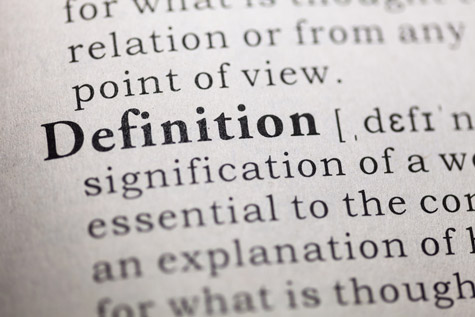
To celebrate this huge milestone in the frameworks ecosystem, I’d like to give you a bit of history about how we got to this point and what we mean by definitions.
The first versions of the PCF we published back in 1992 did not include any additional details. The only explanations provided were derived from the structure of the document – meaning that each element in the framework was only defined by its children and siblings. For example, if you looked at how sales and marketing were represented in version 1 of the PCF, you’d see that it would include only two elements: “market products or services” and “process customer orders”.
“Market and Sell” Category Example from Initial PCF
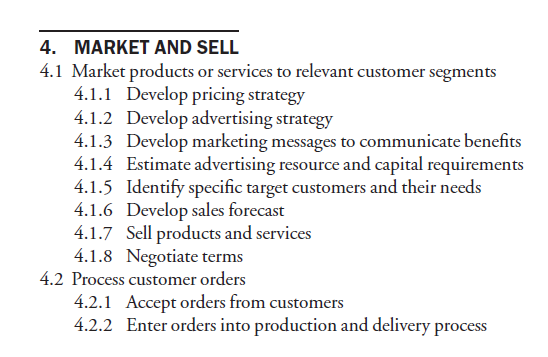
In that initial version of the framework, the introduction text didn’t even mention definitions, let alone how to interpret the PCF.
In the years that followed we added content. Lots of content. Such as additional process elements by the dozen. Each of these new elements added clarity to our intentions and laid the path for the first big definitions project: supply chain definitions in 2007, shortly after I arrived at APQC. This definitions project taught me something valuable: people wanted more context.
The “Goals” from 2007 Definitions Project
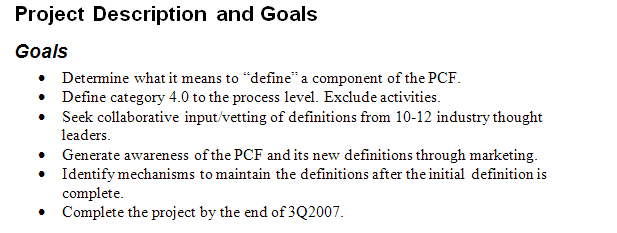
That project was great, but it only focused on one section of the PCF: supply chain. One of the ground-rules we had for that project was that we wouldn't add any net-new content to the PCF. This severely limited our ability to define things since we couldn't add details to activities if we were not going to add content to the PCF. The definitions were all based on the structure of the PCF as it was back then. Also because that rule prevented us from adding content, we had to turn away lots of great industry-specific definitions. We could do better.
Fast forward to 2010, when we introduced the graphical definitions documents that you may already be familiar with.
2010 Graphical Definitions Format
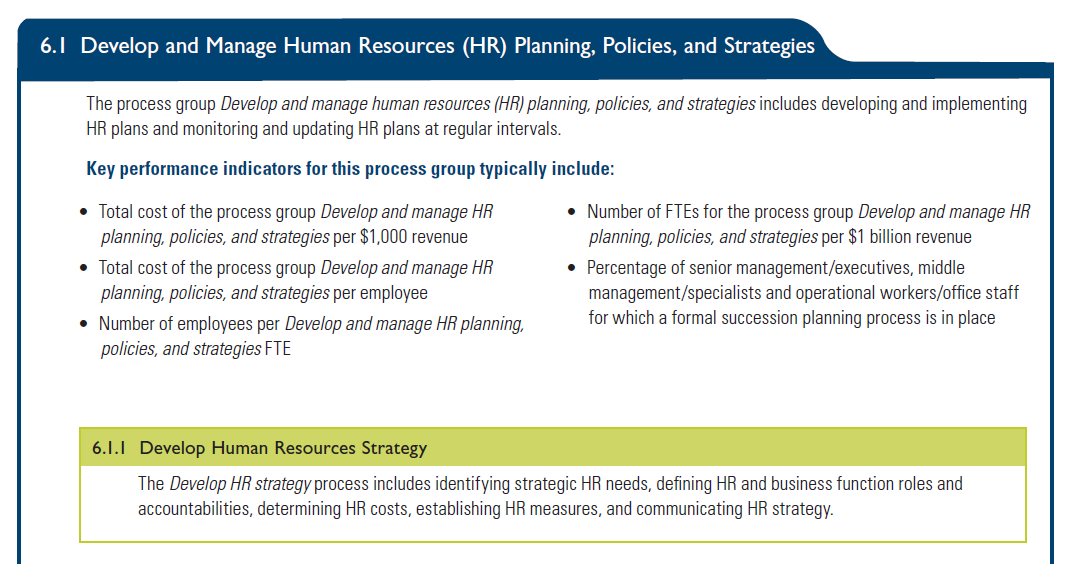
These definitions documents followed the same basic pattern as the definitions in 2008: we the defined the categories, process groups, and processes based on the relationship of the parent/child relationships in the framework. They simply translated into prose what was previously a bullet format. They also identified key performance indicators (KPIs) for the framework based on our research in Open Standards Benchmarking™ (OSB). We still didn’t add any “net new” content to the PCF, and things like activity elements remained undefined.
APQC is a learning organization and we learned from this exercise. These definitions were valuable, but they were very costly to produce and maintain. They also felt incomplete to PCF users because they lacked definitions at the activity level and there weren’t definitions in the industry versions of the PCFs.
One more jump forward in time to 2014. At this point in time, APQC had nearly 20 industry-specific frameworks, yet users in each industry continued to look for more guidance and context. To address these needs we introduced the Excel-based PCFs, which are still the format we use to publish the PCFs on our knowledge base. These PCFs took the previous graphical representation of the definitions, created in 2010, to the next level. Each industry framework now included the definitions we had relevant to that framework and a detailed list of KPIs which you could filter or search through. They were also significantly easier for us to maintain.
The “Modern” PCF Format

All of this nostalgia is great and brings us to today, where I’m proud to introduce a new standard for defining process elements in the PCF and the introduction of nearly 100% coverage of process element definitions, from process category all the way down to activity-level.
What will it look like? Well, it will be introduced in the same Excel format we publish PCFs in today, so no change there. But you will be able to get crisp, consistent, and integrated definitions of nearly every process element across most of our frameworks. We’ll also publish these definitions so that all new frameworks created in MosaiQ™ will include a description at the time the element is created from an APQC template.
New PCF Definitions Format Example
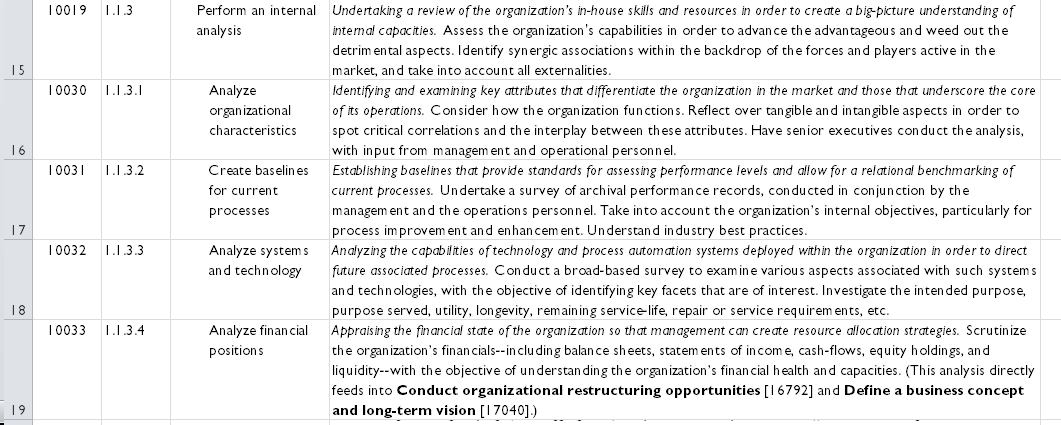
Note how 1.1.3.4 has a reference to another process element.
A few things you need to be aware of:
-
The definitions are different than the ones we have previously published and represent our current thinking across all process elements.
-
We will remove the old style definitions on August 1st from the Knowledge Base. We want to eliminate inconsistencies and reduce confusion.
-
We have a governance process in place and would love to have your feedback. Just email us on [email protected]
What will you do with these new definitions? How will they help you? I’d love to hear from you. Send me an email on [email protected].
You can follow John on Twitter @JohnGTesmer and join APQC’s Process Classification Framework LinkedIn Group